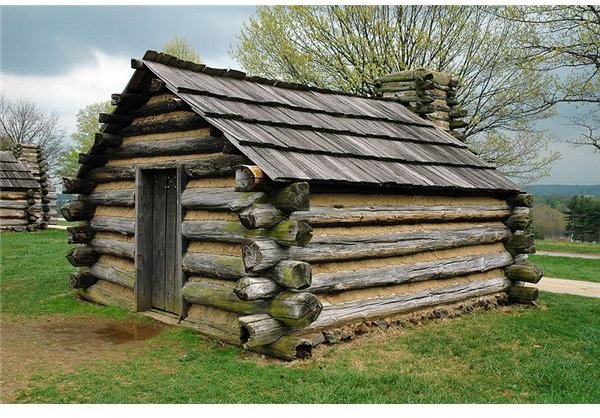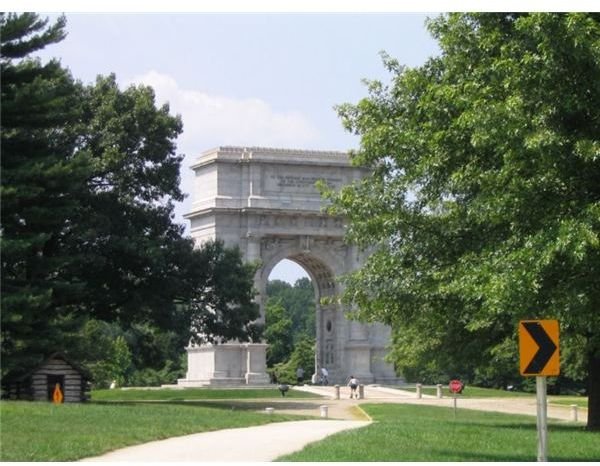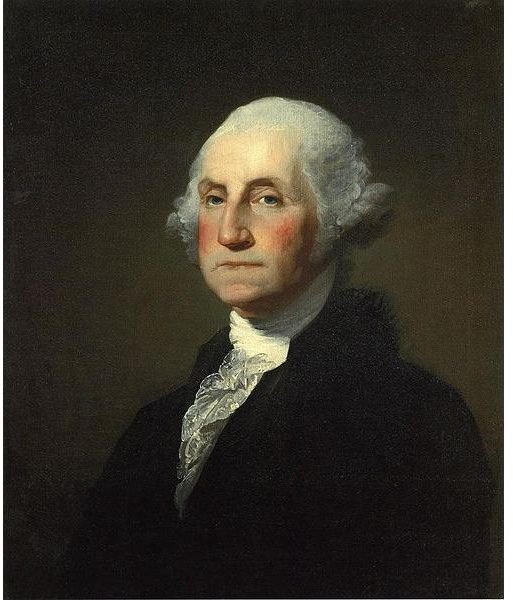Historic Valley Forge: A Review for Students
Washington Lands in Valley Forge
The American Revolutionary War took place from 1775-1783 between Great Britain’s 13 North American colonies and Great Britain. During this insurrection, the Continental Congress appointed George Washington as the commander in chief over the Continental Army where he would fight the British army in multiple conflicts.
In 1777, British commander Sir William Howe won several victories against the Washington’s forces around Philadelphia such as at the Battle of Brandywine and the Battle of Germantown.
Rather than suffering another defeat, Washington retreated with his forces to a place called Valley Forge, which was just 22 miles away from Philadelphia.
Known for its high ground, Valley Forge allowed Washington to situate his forces from December of 1777 to June of 1778. It is here where the Continental Army would struggle in surviving a bitter winter; however, it is also a place where American forces would solidify their strength against Great Britain.
Conditions of Valley Forge
The conditions that the Continental Army would face in Valley Forge were less than promising. Washington’s troops mounted to

around 11,000 with addition troops that would trickle in to support the cause. When the army first entered Valley Forge in December, its first task was to build a shelter that would house the entire regiment.
This was very difficult due to the harsh winter conditions as well as the lack of food and supplies that would affect Washington’s troops both physically and mentally.
The task of building a shelter was no easy; because the troops had no adequate supplies, hauling logs and constructing wooden huts was particularly difficult. Combined with harsh winter conditions, many questioned why Washington wanted to build a “hut city.”
Even with this criticism, the Continental Army completed around 2,000 huts that they would survive in until June. During this time period, the Continental Army faced many challenges such as keeping its morale together to resisting many diseases that would flourish in these cramped quarters.
Men of the Continental Army
The Continental Army encompassed a great diversity of men while situated at Valley Forge. Revolutionary history would prove that African-Americans as well as Native Americans would also join the fight against the British.
Washington supported the aid of African-Americans and many chose to participate to fight for their freedom. With this participation, many African-Americans were excellent troops and had the lowest desertion rates among other groups.
Besides these two groups, men who joined the Continental Army were very diverse. For example, many patriots who joined the cause were from all social classes such as farmers, shopkeepers, politicians, to many more. In one sense, the Continental Army would foreshadow the melting pot America would come to represent after the Revolutionary War was won.
Military Training and Recovery
One of the key turning points that the Continental Army would come to enjoy would be the arrival of a Prussian military tactician named Baron Friedrich von Steuben. Steuben taught the army how to fight effectively against the British army by employing Prussian tactics that were important when dealing with the European style of fighting.
Many accounted that von Steuben was a fierce drillmaster who eventually reinvigorated the Continental Army’s morale by effectively teaching them the arts of war even though the situation for the regiment was grim.
With this military training, things were looking up for Washington’s forces. The Continental Army enjoyed success in its military training and its reorganization resulted in a better fighting force in the spring of 1778. In late spring, France acknowledged that it would help the colonies for its cause against the British by providing supplies and military aid.

In June of 1778, Washington’s forces exited Valley Forge due to General Howe’s retreat out of fear from French military support.
After leaving Valley Forge, Washington’s forces would engage British forces at the Battle of Monmouth in New Jersey. Even though Washington’s forces would fight for another five years, the Continental Army would prove to be an effective fighting force through its training in Valley Forge.
Revolutionary history may have been different if it had not been for Washington’s decision to retreat and solidify his forces at Valley Forge.
This look at historic events at a strategic location during America’s fight for freedom, should help you easily get an “A” on your next paper.
References
Sources:
- Encyclopedia Britannica. “American Revolution.” https://www.britannica.com/EBchecked/topic/617805/American-Revolution
- Encyclopedia Britannica. “Valley Forge.” https://www.britannica.com/EBchecked/topic/622331/Valley-Forge
- NPS. “History: Valley Forge.” https://www.nps.gov/history/logcabin/html/vf.html
Images:
- Smith, Dan. “Valley Forge Cabin.” https://commons.wikimedia.org/wiki/File:Valley_Forge_cabin.jpg
- Stuart, Gilbert. “George Washington.” https://commons.wikimedia.org/wiki/File:Gilbert_Stuart_Williamstown_Portrait_of_George_Washington.jpg
- Swinney, Robert. “Valley Forge War Memorial.” https://commons.wikimedia.org/wiki/File:Valley_forge_revolutionary_war_memorial_bs.jpg
